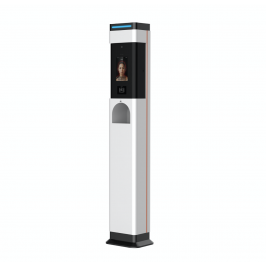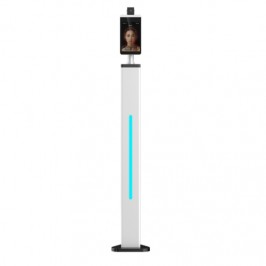5 Retail Trends during COVID-19

Coronavirus has impacted retail severely, it brought uncertainty, intricacy, and change to the whole industry. Due to the COVID-19 outbreak, retailers are struggling to survive. Recent technological and economic changes greatly influenced the types of products, services society consumes. For those who knew how to react, positive opportunities emerged. However, to increase sales and make our businesses thrive, we should find answers to the following questions:
- How does Coronavirus impact retail?
- How to survive retail during COVID-19?
- What are the Coronavirus retail trends and new business opportunities?
Knowing the answers, you’ll be able to get ready for the long-term implications, find the ways to succeed, and increase profits.
Impact Of Covid-19 On Retail
Due to COVID-19, small businesses, including retail, have experienced a devastating impact. According to the Main Street America (MSA) survey, about 7.5 million small businesses may be closed permanently within half a year. Additionally, up to 36 million Americans employed by the nation’s small businesses are at risk of being fired. Retail activities ranked as non-essential have been hit the most severe way since they were shut down. Essential retail businesses are luckier - they’ve been operating during a strict quarantine. However, they perform under challenging conditions, including significant disruptions in supply chains, labor supply shortages, and sometimes considerable spikes in demand for particular goods.
Furthermore, social distancing restrictions and lockdowns have impacted physical shops more than online shops and increased the ongoing transition from brick-and-mortar to online retailing. The bottom line? Retailers admit that Corona will significantly impact their business over the coming years. So, it’s time to rethink retail trends in 2020 during the post-COVID era since they give your business the chance to survive and thrive.
Trend 1: Business models are changing
Store-based retailing is becoming less popular, actually, it has passed its zenith. It was clear even before the Coronavirus pandemic. Obviously, lots of physical stores will return on the market, but we must realize that the days of increasing growth through physical stores have ended. More and more business owners are looking for platform companies to help them put in place some of those essential capabilities. Shifting to online retailing is a global trend.
For instance, according to a Nielsen report, in France, the e-commerce market share increased by up to 10 percent of total consumer product sales, compared to less than 6 percent in 2019. The Office for National Statistics in the UK reports that retail expenses spent online rose from 19% in April 2019 to almost 31% in April 2020, it's a record high. To sum up, if you want your business to survive under new circumstances, digital transformation is a must for you.
Trend 2: Lofty values move to the forefront
This is one of the most important and interesting retail trends during COVID-19. The majority of businesses and authorities are clear that they target to put people ahead of profits. The ongoing epidemic has only developed a trend that was already in progress. Imagine this: according to Edelman’s research conducted in late 2018, ⅔ of consumers worldwide stated that they would determine to either purchase or thumb down a brand based just on its position on a political or social issue. Therefore, businesses should become even more consumer-centric than they were before. They must be creative and inventive to find new ways for their brands. It would be wise to carry out an interrogation among your clients to figure out their most pressing needs and demands and then propose your solutions. This way, you’ll show you do care and win your customers back.
Trend 3: Managing customer demand swing
Under today's circumstances, customers care more about the products' availability than about breadth of assortment. And this can modify the way many retailers perform. When countries moved into quarantine, and non-essential stores were shut down, those business owners who knew their customers and their demands, had an advantage. Moreover, while some retailers see clients shift channels or demand fall away, others celebrate unprecedented spikes in demand. Why? Again, because they understand people's needs and can manage fluctuation. Actually, the ability to predict and manage customers' demand has never been so crucial.
Trend 4: Rethinking of the current cash
Today, retailers are rethinking and taking a closer look at current cash positions. They predict liquidity profiles, various shifts in their working capital dynamics for a longer period, and assess how they'll pay the bills, short term cash forecasts. Each industry is highly dependent on cash to pay for real estate, stock, and - more importantly - employees. That's why retailers now communicate with authorities to see how they can take advantage of rental renegotiations, any hardship funds, and rate holidays. Rethinking of the current cash one of the COVID-19 retail trends of 2020. Furthermore, business owners are also reassessing their financial stability under different possible scenarios. If required, they engage with creditors to change financial covenants or refinance loans.
Trend 5: Safeguarding people
The ongoing pandemic has led to strict quarantines and workplace shut-downs. Now, when lockdown measures are relaxed, business owners must plan how to protect their employees and customers from COVID-19 transmission in their facilities. They promote good hygiene, social distancing, and have stores clean and disinfected. More importantly, they must provide consistent temperature monitoring and symptoms check in workers and visitors to abolish cross-contamination risk.
Smart temperature scanners are becoming an emergency purchase today. In addition to accurate and fast temperature checking, they offer plenty of other advanced and helpful features, e.g., face recognition technology, recording and storing of data, notifications, and more. Smart devices can be used indoors and outdoors; they all are customizable as per your business needs; some of them are capable of scanning vast groups of people.
The best equipment includes temperature cameras, smart kiosks, smart sanitizing hubs, and walk-through metal detectors with a fever scanner. No matter which of them you choose, these smart devices will only allow entry to people with no signs of fever so that no one with an elevated body temperature unknowingly exposes the people inside the facility to Coronavirus.
Alongside physical protection, business owners implement crisis communication plans to help their employees adapt to a new situation and feel less frustrated. Reducing tension among employees and increasing their confidence will positively influence their productivity. Lastly, business owners should think in advance how they'll manage the workforce under various situations.
Final thoughts
Above all, retailers should think about their customers and employees and analyze Coronavirus's impact on them. You should maintain trust in your product, service, and brand; besides, you have to invest in your employees' and customers' safety. In today's situation, building strong relationships based on trust is far more important than immediate profits. We hope that you think about all of the scenarios and plan accordingly. Whether the ongoing situation lasts for months or years, we should realize that reality has fundamentally changed for all businesses, including retail. Therefore, we all just have to adapt to it and do our best to survive and help people around.





